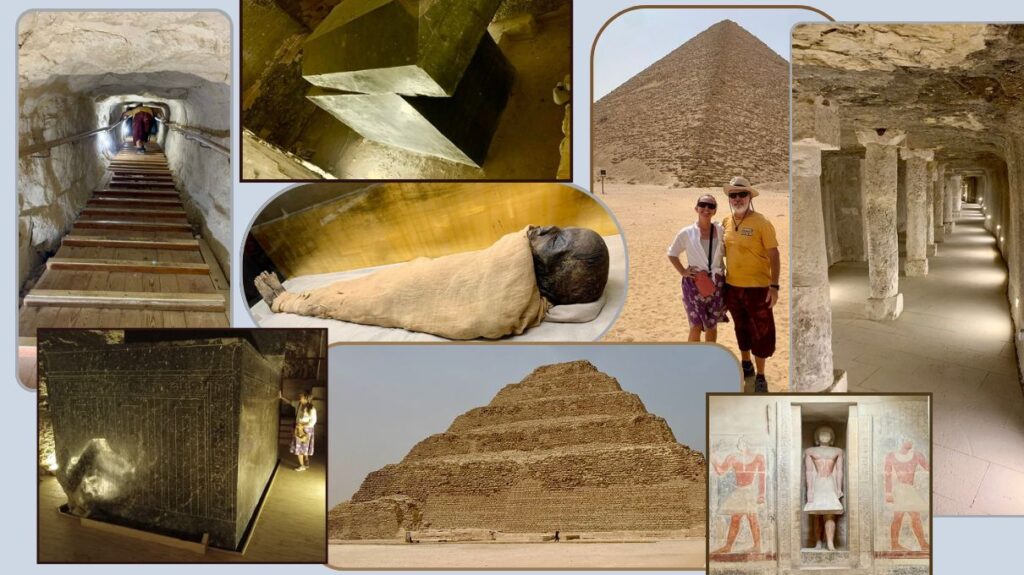The Giza Pyramids and the new Grand Egyptian Museum in Cairo are the biggest tourism draws for great reasons. But there are other historic sites to see outside Africa’s largest metro area. We ventured out into the desert from Cairo on a day trip to Dahshur, Memphis and Saqqara to experience these ancient places – all fascinating in their own rights.
Since so much is written about these other regional ‘hot spots’, this post talks briefly about what I personally found the most interesting at each stop, and how much time I’d suggest for these sites.
Inside pyramids & tombs at Dahshur & Saqqara, with a stop in Memphis
We started at Dahshur, an ancient Egyptian complex about 25 miles south of Cairo, and then we worked our way back north.
Dahshur
Before the Giza Pyramids, there were others. The ancient Egyptians practiced with the so-called Bent Pyramid at Dahshur to get the angles right, and the Red Pyramid, the first attempt at a pyramid without steps and smoother sides like you see at Giza.

The Red Pyramid is the second largest in Egypt. (The largest is Khufu at Giza, the third largest is Knefre at Giza.) The Bent Pyramid is the fourth largest.
The big draws for me
The Red and Bent pyramids have chambers to explore via long, squat stairways. We entered both, and each one eventually leads to an inner-chamber that is a bare stone-walled room. All of the antiquities have been removed. Still, it is quite an experience to be deep inside an ancient pyramid.
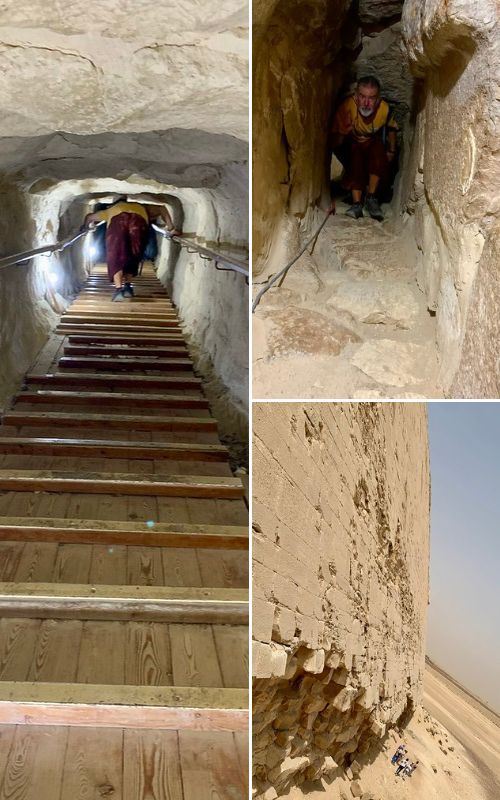
If you are physically able to go down and back up some 200 steps while bent over at each site, I recommend both. I also recommend getting as early a start on the day as possible, with fewer tourists around. We had almost the entire way down and up to ourselves inside each one. These take a little more effort than the Khufu Pyramid (The Great Giza Pyramid).
Recommended time for Dahshur
You can see this entire Dahshur complex in about two to 2.5 hours, depending on how long it takes you to do stairs into each chamber, and factor in a few minutes drive from one pyramid to the next.
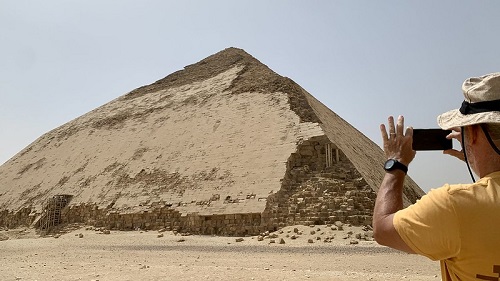
If you only have time for one – I would recommend the Bent Pyramid. It was a few meters longer to walk down, but it did not smell of ammonia inside the chamber, like the Red Pyramid. The smell comes in the Red Pyramid from a bat infestation and it burned my throat horrifically.
Plus, the Bent Pyramid has ventilation and a cooler inner chamber because you must walk through a small cave-like hallway to get there.
Memphis
Modern-day Memphis is covered with homes, shops and mosques. But in the open-air museum lie some ancient relics, including the giant Ramesses II statue.
The big draw for me
Here again is yet another Egyptian art treasure cut from a single piece of stone — the great Ramesses II. For years this giant laid face down in a pond with its back looking like a rock formation similar to a crocodile until it was hauled upright and placed at a viewing station.
His lower legs are missing, so after years spent face down in muddy water, now he’s face up.
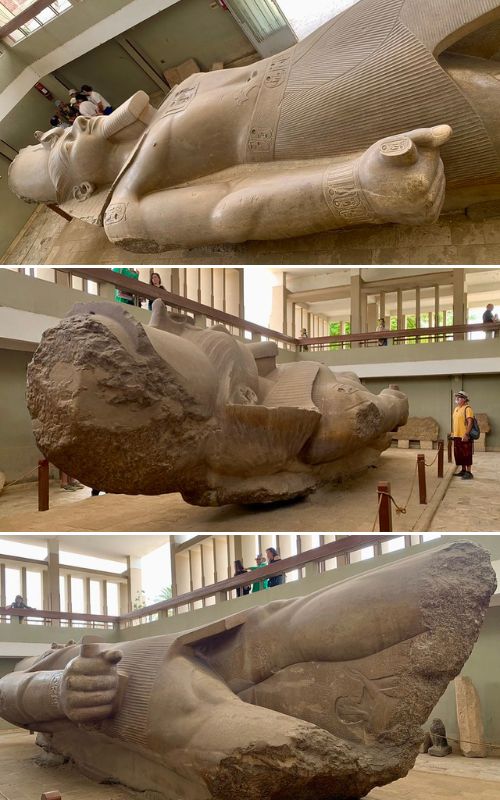
Recommended time for Memphis
It’s really the only thing worth seeing here, in my opinion. We spent close to an hour at the site— too much. You walk around the viewing platform and be done in 15 minutes.
Saqqara
Saqqara has the first pyramid built by the Egyptians: the Pyramid of Djoser, or the Step Pyramid. This is a given to visit while in Saqqara. You can’t go here and not go inside this pyramid. It’s easier than the pyramids at Dahshur – no steps – just walk in.
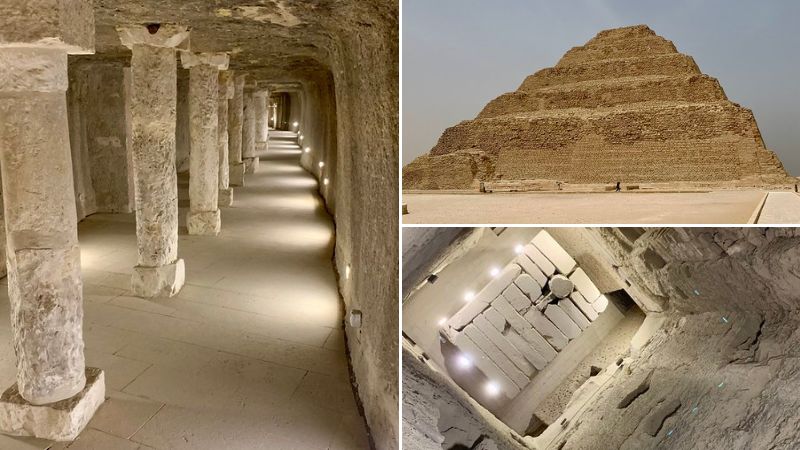
Aside from the Step Pyramid, there are two other places at this complex that I say don’t miss: The mysterious Serapeum and Mereruka’s mastaba (a tomb shaped somewhat like a house). Then add in the museum if you have the time.
The big draws for me
Of all the many sites at Saqqara, my favorite is The Serapeum.
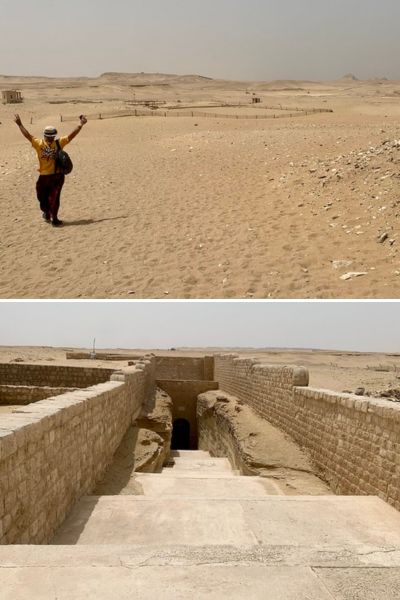
the Serapeum at Saqqara
Gigantic 40 ton boxes sit underground in the middle of the desert, and it bends my mind how they got there and what they might’ve been used for.
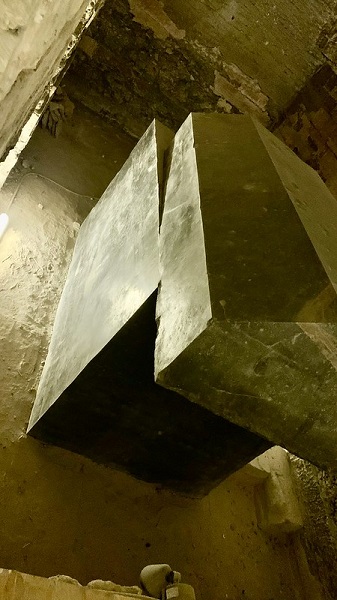
Modern archaeology maintains The Serapeum boxes were merely used as sarcophagi for Apis bulls. The beasts were believed to be incarnations of the Egyptian god Ptah. On the official antiquity site of Egypt, there is no mention of any other possible use for these mind-boggling boxes. All traditional Egyptologists reject any other use.
Yet inquisitive minds may have logical questions that cannot be answered, such as:
- How did the ancients get perfect 90-degree angles* with their primitive tools on these massive black granite boxes?
- Additionally, how did they mirror-polish the surfaces with tools of that time?
- The average weight of the boxes is 88,000 pounds, with lids about half that much – so how were they positioned in such close quarters?
- Where are the bull mummies? There were bull remains found in the Serapeum catacombs, but not in these granite boxes – only in nearby wooden boxes, which were much easier to construct.
*Some of the outsides on the granite boxes do not have perfect angles — but the inside corners are perfect 90 degree angles. Were the outsides once perfect, too? And if so, how did they become mangled?
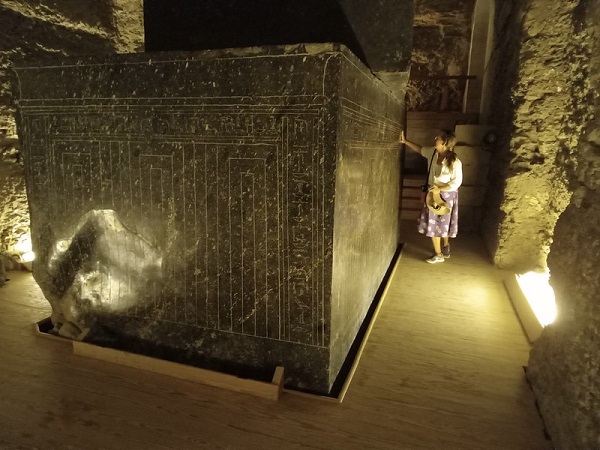
Also, 21 of the 24 boxes do not have inscriptions. Three of them do, and the inscriptions look like kindergarten etchings on the surface level, in stark contrast to the precise construction of the boxes and their lids.
“Conspiracy theorists” maintain the ancient Egyptians found the boxes already constructed and repurposed them as bull burial containers. (Still, where are the bull mummies? The boxes were discovered empty, with no evidence of biological matter inside.) Further, these alternative theorists claim the boxes were used for power generation and power conduction, or perhaps energy or energy waste storage, by some lost ancient advanced civilization we have yet to discover.
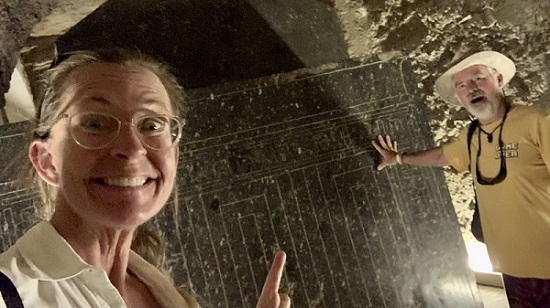
These types of boxes have not been found anywhere else in Egypt – or the world. If the Egyptians did in fact craft these boxes, they didn’t replicate them at Giza, as they did with the pyramids.
With the news earlier this year about structures allegedly found underneath the Khafre Pyramid at Giza*, I can’t help but wonder about the official story — which is that the Serapeum was used only for bull burials.
What do I believe? I don’t know. I simply don’t know enough about any of this to have an informed opinion. I don’t really think aliens landed on Earth to put these boxes here (or the pyramids) and then took off. There are other gigantic chunks of rock moved around by the ancient Egyptians that signal some know-how. However, there certainly are curious things about the boxes.

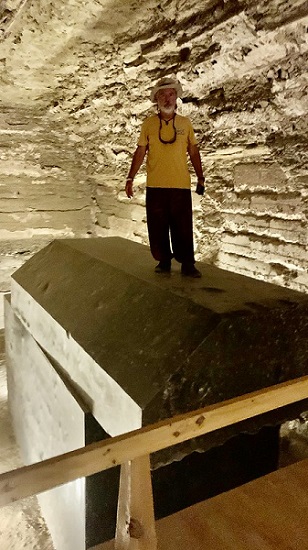
*If you haven’t heard of the Khafre Project: Italian and Scottish scientists say they used new technology to detect structures underneath the Khafre Pyramid (the second largest at Giza). They plan to hold a summit in Malta in mid-June 2025 to share more on their findings. Traditional archaeologists so far have said such structures under Khafre couldn’t possibly exist. A few experts are more open minded.
Go down the rabbit hole with a non-peer reviewed paper on the Khafre Project. It’s mind-blowing, but yet not exactly preposterous, especially when you take into account the Anatolia region of Turkiye and the ancient structures found there.
Mastaba of Mereruka
Saqqara also offers several tombs to visit, including that of a nobleman named Mereruka who lived around 2,300 B.C. He held numerous titles and was the most powerful man in the kingdom after King Teti himself. (Mereruka married Teti’s daughter.)
What’s worth seeing here are the well-preserved painted walls and reliefs, as well as a statue of Mereruka that remains mostly intact.
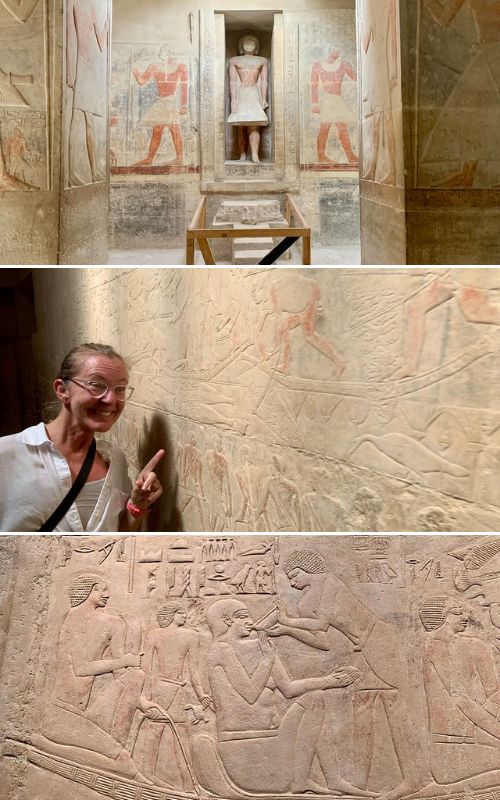
His tomb is the largest and most elaborate of non-royals in Saqqara – and most of it is open for your exploration.
Recommended time for Saqqara
All together at Saqqara, it could easily take 2.5 hours to enter the Step Pyramid (no climbing here – just walk in), gawk at the boxes in the catacombs at the Serapeum, and wander the halls of Mereruka’s mastaba tomb — including the short drive and desert walk from the pyramid and tomb to the Serapeum.
If you add in the museum (which I recommend if you have time), then tack on another hour or hour-and-a-half.
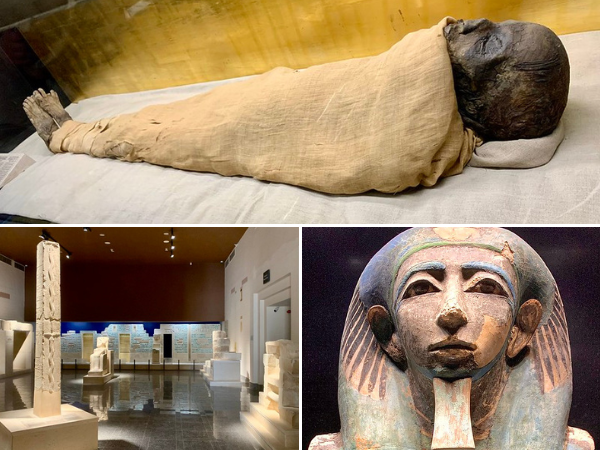
Allow even more time if you want to see other sites here (Saqqara is huge).
In total, we spent only about 3.5 hours at Saqqara, and quite frankly, I could have spent many more there. I’m just glad we made it all. As we say: travel now, because Life is Now.
How we got around
We hired a driver for the day, who was arranged by our bed and breakfast host. The price was $50 for the entire day, plus we tipped.

We did not have a guide. Instead, we read about each place before we arrived. A guide will – of course – cost considerably more. We simply wanted to do it on our own, the budget slow travel way.
Contact Adel on his WhatsApp: +20 100 522 5651 to arrange a day trip anywhere in Cairo, Giza, or even Aswan. And see where we stayed in a video tour of his bed and breakfast.
Remember: we get absolutely nothing in return for good reviews – no kickbacks of any type. We simply want to help you have the best budget slow travel experience, because Life is Now!
Thanks for reading, “Inside pyramids & tombs at Dahshur & Saqqara, with a stop in Memphis.”
About Ellen

Ellen’s sobriety date is April 13, 2010. She left the news business in 2015 to travel the world on a budget with spouse Theo in early retirement.
She was diagnosed with breast cancer in 2018 while traveling and had a double mastectomy without reconstruction in Croatia. She recovered, and kept traveling the world as a ‘flattie‘.
See what it costs to retire early and travel the world!
Check out our popular monthly budget breakdowns.

